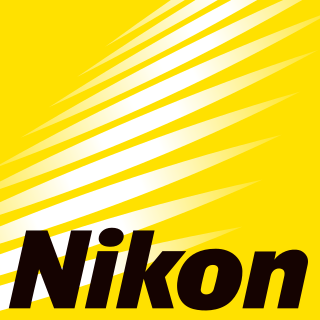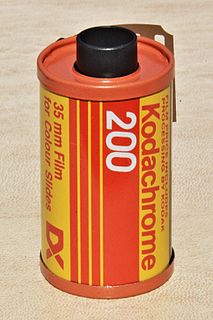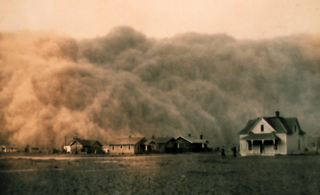Technology
The ICE technology works from within the scanner, so unlike the software-only solutions it does not alter any underlying details of the image. Subsequent to the original Digital ICE technology, which used infrared cleaning, additional image enhancement technologies were marketed by Applied Science Fiction and Kodak under similar and related names, often as part of a suite of compatible technologies. The ICE technology uses a scanner with a pair of light sources, a normal RGB lamp and an infrared (IR) lamp, and scans twice, once with each lamp. The IR lamp detects the dust locations with its unique detection method, and then inpainting is applied based on this data afterwards. The general concept is to subtract the position of scratches and dust from the RGB image.
Infrared cleaning is a technique used by some film scanners and flatbed scanners to reduce or remove the effect of dust and scratches upon the finished scan. It works by collecting an additional infrared channel from the scan at the same position and resolution as the three visible color channels. The infrared channel, in combination with the other channels, is used to detect the location of scratches and dust. Once located, those defects can be corrected by scaling or replaced by inpainting.

Inpainting is the process of reconstructing lost or deteriorated parts of images and videos. In the museum world, in the case of a valuable painting, this task would be carried out by a skilled art conservator or art restorer. In the digital world, inpainting refers to the application of sophisticated algorithms to replace lost or corrupted parts of the image data.
Limitations of Digital ICE
Digital ICE is used to detect scratches and dust during transparent film scan and is not applicable for opaque document scanning. While chromogenic black-and-white films are supported by Digital ICE, other black-and-white films containing metallic silver, which form from silver halides during the development process of the film, are not. This is because the long wave infrared light passes through the slide but not through dust particles. The silver particles reflect the infrared light in a similar manner to dust particles, thus respond equally in visible light and infrared. A similar phenomenon also prevents Kodak Kodachrome slides from being scanned with Digital ICE. Kodachrome's cyan layer absorbs infrared.

A metal is a material that, when freshly prepared, polished, or fractured, shows a lustrous appearance, and conducts electricity and heat relatively well. Metals are typically malleable or ductile. A metal may be a chemical element such as iron, or an alloy such as stainless steel.

Silver is a chemical element with symbol Ag and atomic number 47. A soft, white, lustrous transition metal, it exhibits the highest electrical conductivity, thermal conductivity, and reflectivity of any metal. The metal is found in the Earth's crust in the pure, free elemental form, as an alloy with gold and other metals, and in minerals such as argentite and chlorargyrite. Most silver is produced as a byproduct of copper, gold, lead, and zinc refining.
A silver halide is one of the chemical compounds that can form between the element silver and one of the halogens. In particular, bromine, chlorine, iodine and fluorine may each combine with silver to produce silver bromide (AgBr), silver chloride (AgCl), silver iodide (AgI), and three forms of silver fluoride, respectively.
Further development
Kodak's own scanner, the "pro-lab" Kodak HR500 Plus was equipped with Digital ICE that could scan Kodachrome slides effectively; however, this scanner was discontinued in 2005. Nikon produced the Nikon Super Coolscan LS-9000 ED scanner with a new version of ICE (Digital ICE Professional) from 2004 until it was discontinued in 2010. This was capable of scanning Kodachrome slides reliably, dust- and scratch-free, without additional software. LaserSoft Imaging released an infrared dust and scratch removal tool (iSRD - Infrared Smart Removal of Defects) in 2008, that allows Nikon's film scanners for Mac OS X and Microsoft Windows, as well as many scanners from other manufacturers to make high quality scans of Kodachrome slides. Fujifilms system for dust and scratch removal, called "Image Intelligence", works on a similar principle as Digital ICE and will also work on Kodachrome film.

Nikon Corporation, also known just as Nikon, is a Japanese multinational corporation headquartered in Tokyo, Japan, specializing in optics and imaging products.

LaserSoft Imaging AG is a software developer designing software such as SilverFast for scanners and digital cameras. The company's headquarters are located in Kiel, Germany, 100 kilometres (62 mi) north of Hamburg, and another office in Sarasota, Florida, United States.
Microsoft Windows is a group of several graphical operating system families, all of which are developed, marketed, and sold by Microsoft. Each family caters to a certain sector of the computing industry. Active Windows families include Windows NT and Windows Embedded; these may encompass subfamilies, e.g. Windows Embedded Compact or Windows Server. Defunct Windows families include Windows 9x, Windows Mobile and Windows Phone.

Film stock is an analog medium that is used for recording motion pictures or animation. It is a strip or sheet of transparent plastic film base coated on one side with a gelatin emulsion containing microscopically small light-sensitive silver halide crystals. The sizes and other characteristics of the crystals determine the sensitivity, contrast and resolution of the film. The emulsion will gradually darken if left exposed to light, but the process is too slow and incomplete to be of any practical use. Instead, a very short exposure to the image formed by a camera lens is used to produce only a very slight chemical change, proportional to the amount of light absorbed by each crystal. This creates an invisible latent image in the emulsion, which can be chemically developed into a visible photograph. In addition to visible light, all films are sensitive to X-rays and high-energy particles. Most are at least slightly sensitive to invisible ultraviolet (UV) light. Some special-purpose films are sensitive into the infrared (IR) region of the spectrum.
The following list comprises significant milestones in the development of photography technology.

Kodachrome is a brand name for a non-substantive, color reversal film introduced by Eastman Kodak in 1935. It was one of the first successful color materials and was used for both cinematography and still photography. For many years Kodachrome was widely used for professional color photography, especially for images intended for publication in print media. Because of its complex processing requirements, the film was sold process-paid in the United States until 1954 when a legal ruling prohibited this. Elsewhere, this arrangement continued.
Photographic processing or development is the chemical means by which photographic film or paper is treated after photographic exposure to produce a negative or positive image. Photographic processing transforms the latent image into a visible image, makes this permanent and renders it insensitive to light.

In photography, reversal film is a type of photographic film that produces a positive image on a transparent base. The film is processed to produce transparencies or diapositives instead of negatives and prints. Reversal film is produced in various sizes, from 35 mm roll film to 8×10 inch sheet film.

In infrared photography, the film or image sensor used is sensitive to infrared light. The part of the spectrum used is referred to as near-infrared to distinguish it from far-infrared, which is the domain of thermal imaging. Wavelengths used for photography range from about 700 nm to about 900 nm. Film is usually sensitive to visible light too, so an infrared-passing filter is used; this lets infrared (IR) light pass through to the camera, but blocks all or most of the visible light spectrum.

A film scanner is a device made for scanning photographic film directly into a computer without the use of any intermediate printmaking. It provides several benefits over using a flatbed scanner to scan in a print of any size: the photographer has direct control over cropping and aspect ratio from the original, unmolested image on film; and many film scanners have special software or hardware that removes scratches and film grain and improves color reproduction from film.

Photo CD is a system designed by Kodak for digitizing and saving photos onto a CD. Launched in 1992, the discs were designed to hold nearly 100 high quality images, scanned prints and slides using special proprietary encoding. Photo CDs are defined in the Beige Book and conform to the CD-ROM XA and CD-i Bridge specifications as well. They were intended to play on CD-i players, Photo CD players, and any computer with a suitable software.
A motion picture film scanner is a device used in digital filmmaking to scan original film for storage as high-resolution digital intermediate files.
Ultraviolet photography is a photographic process of recording images by using light from the ultraviolet (UV) spectrum only. Images taken with ultraviolet light serve a number of scientific, medical or artistic purposes. Images may reveal deterioration of art works or structures not apparent under visible light. Diagnostic medial images may be used to detect certain skin disorders or as evidence of injury. Some animals, particularly insects, use ultraviolet wavelengths for vision; ultraviolet photography can help investigate the markings of plants that attract insects, while invisible to the unaided human eye. Ultraviolet photography of archaeological sites may reveal artifacts or traffic patterns not otherwise visible.

K-14 was the most recent version of the developing process for Kodak's Kodachrome transparency film before its discontinuation It superseded previous versions of the Kodachrome process used with older films.

Scanography, more commonly referred to as scanner photography, is the process of capturing digitized images of objects for the purpose of creating printable art using a flatbed "photo" scanner with a CCD array capturing device. Fine art scanography differs from traditional document scanning by using atypical objects, often three-dimensional, as well as from photography, due to the nature of the scanner's operation.

Full-spectrum photography is a subset of multispectral imaging, defined among photography enthusiasts as imaging with consumer cameras the full, broad spectrum of a film or camera sensor bandwidth. In practice, specialized broadband/full-spectrum film captures visible and near infrared light, commonly referred to as the "VNIR".

SilverFast is the name of a family of software for image scanning and processing, including photos, documents and slides, developed by LaserSoft Imaging.

Photographic film is a strip or sheet of transparent plastic film base coated on one side with a gelatin emulsion containing microscopically small light-sensitive silver halide crystals. The sizes and other characteristics of the crystals determine the sensitivity, contrast and resolution of the film.

Spirit DataCine is a telecine and/or a motion picture film scanner. This device is able to transfer 16mm and 35mm motion picture film to NTSC or PAL television standards or one of many High-definition television standards. With the data transfer option a Spirit DataCine can output DPX data files. The image pick up device is a solid state charge-coupled device. This eliminated the need for glass vacuum tube CRTs used on older telecines. The units can transfer negative film, primetime, intermediate film and print film, stock. One option is a Super 8 gate for the transfer of Super 8 mm film. With a sound pick up option, optical 16mm and 35mm sound can be reproduced, also 16mm magnetic strip sound. The unit can operate stand alone or be controlled by a scene by scene color corrector. Ken Burns created The Civil War, a short documentary film included in the DVD release, on how he used the Spirit DataCine to transfer and remaster this film. The operator of the unit is called a Colorist or Colorist Assistant. The Spirit DataCine has become the standard for high-end real-time film transfer and scanning. Over 370 units are used in post production facilities around the world. Most current film productions are transferred on Spirit DataCines for TV, Digital television, Cable television, Satellite television, Direct-to-video, DVD, blu-ray Disc, pay-per-view, In-flight entertainment, Stock footage, Dailies, Film preservation, digital intermediate and digital cinema. The Spirit DataCine is made by DFT Digital Film Technology GmbH in Darmstadt, Germany.

















